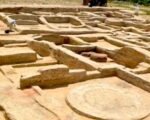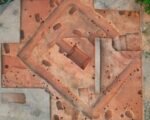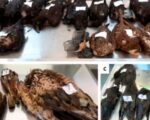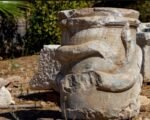Archaeologists have made a fascinating discovery atop the Sandgrovskardet peak in Norway: ancient reindeer hunting tools dating back 1,700 years. These artifacts, uncovered due to melting glaciers, include arrows, hunting blinds, reindeer bones, and “scaring sticks” used to guide the animals. The site, first identified in 2013, has revealed significant insights into the hunting practices of ancient Norwegians. This discovery not only sheds light on the past but also highlights the impact of climate change on archaeological research.
A Glimpse into Ancient Hunting Practices
The Sandgrovskardet peak has proven to be a treasure trove for archaeologists. Among the most notable finds are five arrows, three of which still have their iron arrowheads intact. These arrows date back to between 300 and 600 C.E., while the other two are believed to be even older, possibly from around 800 B.C.E. The preservation of these artifacts is remarkable, providing a rare glimpse into the tools and techniques used by ancient hunters.
In addition to the arrows, the site also revealed the remains of 40 hunting blinds. These stone-built structures were used by hunters to hide from reindeer, allowing them to get within shooting distance. The hunters would use natural rock formations or build their own blinds if necessary. This strategic use of the landscape demonstrates the ingenuity and adaptability of ancient hunters in their pursuit of game.

The discovery of “scaring sticks” adds another layer to our understanding of ancient hunting methods. These sticks were used to corral reindeer towards the hunting blinds, making it easier for hunters to take their shots. This method of guiding animals highlights the sophisticated strategies employed by ancient hunters to ensure successful hunts.
The Role of Climate Change
The discovery of these ancient hunting tools was made possible by the melting glaciers in Norway. As global temperatures rise, glaciers are retreating, revealing artifacts that have been hidden for centuries. This phenomenon has opened up new opportunities for archaeologists to study ancient sites that were previously inaccessible. However, it also underscores the urgent need to address climate change and its impact on our planet.
The Secrets of the Ice team, led by archaeologist Lars Pilø, has been at the forefront of this research. Their work at Sandgrovskardet began in 2013, but it wasn’t until 2018 that they were able to fully document the site. The team’s findings have provided invaluable insights into the lives of ancient Norwegians and the challenges they faced in their environment.
The melting glaciers have also highlighted the importance of preserving these artifacts for future generations. As the ice continues to retreat, more sites like Sandgrovskardet may be uncovered, offering further opportunities for archaeological research. It is crucial that we take steps to protect these sites and the valuable information they hold.
Implications for Archaeological Research
The discovery of the Sandgrovskardet hunting tools has significant implications for the field of archaeology. It demonstrates the potential for new discoveries in previously unexplored areas, particularly those affected by climate change. The findings at Sandgrovskardet have provided a wealth of information about ancient hunting practices, shedding light on the tools and techniques used by our ancestors.
The preservation of these artifacts also highlights the importance of interdisciplinary research. The collaboration between archaeologists, climate scientists, and other experts has been essential in uncovering and studying these ancient tools. This interdisciplinary approach will be crucial in future research efforts, as we continue to explore the impact of climate change on archaeological sites.
The Sandgrovskardet discovery also serves as a reminder of the importance of preserving our cultural heritage. As we uncover more about our past, it is essential that we take steps to protect these artifacts and the knowledge they represent. By doing so, we can ensure that future generations have the opportunity to learn from and appreciate the rich history of our ancestors.













